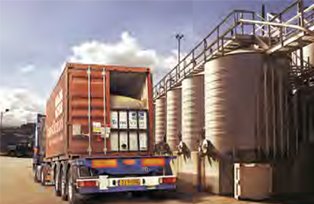 “Flexible tanks” or “Flexitanks” are a kind of storage equipment for liquids such as water, oil, wines etc. Compared to steel tanks or drums, flexible tanks have many advantages, including lighter weight and being rustproof, foldable, and quicker and easier to set up. With the same capacity, a flexible tank may have just 10% of a steel tank’s weight. The disadvantages of flexible tanks include lower durability and shorter longevity.
“Flexible tanks” or “Flexitanks” are a kind of storage equipment for liquids such as water, oil, wines etc. Compared to steel tanks or drums, flexible tanks have many advantages, including lighter weight and being rustproof, foldable, and quicker and easier to set up. With the same capacity, a flexible tank may have just 10% of a steel tank’s weight. The disadvantages of flexible tanks include lower durability and shorter longevity.
In this article we shall focus on Flexitanks being used in the Shipping Industry and the potential issues and claims faced in relation to the same.
 Initially Flexitanks were designed on the basis that they would be for multi-trip use but these were soon replaced by single trip Flexitank. Though Flexitanks have been in vogue for over 20 years, their popularity have grown by leaps and bound in the recent past. A Flexitank is a bladder that is designed to fit inside a 20ft general freight container, known to carry products from portable water, and liquids like wine and fruit juices or concentrates to paints, oils, non – hazardous chemicals, latex, etc.
Initially Flexitanks were designed on the basis that they would be for multi-trip use but these were soon replaced by single trip Flexitank. Though Flexitanks have been in vogue for over 20 years, their popularity have grown by leaps and bound in the recent past. A Flexitank is a bladder that is designed to fit inside a 20ft general freight container, known to carry products from portable water, and liquids like wine and fruit juices or concentrates to paints, oils, non – hazardous chemicals, latex, etc.
 The main issue currently faced is the increase in number of incidents and claims regarding the use of these flexible tanks, which are usually much higher than normal cargo carried by containers.
The main issue currently faced is the increase in number of incidents and claims regarding the use of these flexible tanks, which are usually much higher than normal cargo carried by containers.
There are presently no prescribed standards regarding design or construction or packaging requirements or rules for carriage pertaining to use of flexitanks. However, the Container Owners Association (COA) set up a flexitank working group with the inaugural meeting held in Paris on 28 June 2007. The said working group has been instrumental in formulating The Code of Practice for Flexitanks, which has being periodically revised. However, these are only guidelines to be followed and there is no authority to enforce or implement the code.
Discussions by various organisations dealing with the use of Felxitanks reveal that some of the main reasons for claims are due to the excess of the load bearing capacity, unsuitable container, failure to comply with the Transport Safety, improper installation, human factor and manufacturing defects.